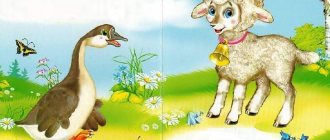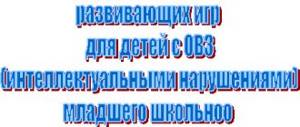Practical assignments in economics “Economy and economic living conditions”
In the modern world, every person must be economically literate. Everything that surrounds a person is somehow connected with the economy. In order to live, he needs air, water, land, food and much more. Every step he takes is aimed at satisfying his needs. In this practical lesson, we introduce students to how to identify certain human needs and how they can be changed in certain living conditions.
Everything that surrounds a person is somehow connected with the economy. In order to live, he needs air, water, land, food and much more. Every step he takes is aimed at satisfying his needs.
The more natural the need, the clearer its boundaries.
It is not difficult to determine how much water or bread a person needs to be satisfied. How to measure the amount of friendship he needs? Try to determine for yourself what needs are and how they differ from each other.
Man satisfies his needs using everything that is created by nature and accumulated over centuries of development of civilization - minerals, forest resources, water resources, industry, trade, art, education, etc.
CONSUMERS are people who are already using or intend to use goods or services.
As soon as you enter a store, pharmacy or cinema, you are a consumer . When satisfying his needs, a person must remember that the resources used for this are LIMITED.
RESOURCES - reserves of minerals, forests and valuable fur-bearing animals, fresh water and fish, as well as RESOURCES factories and factories, manufactured goods, money and everything else that is produced by man for his needs.
Resources can be reproducible, non-reproducible and irreplaceable. Reproducible resources can be replenished as they are used (for example, by cutting down one tree, you can plant another or even several trees).
Oil, gold, coal and other minerals are considered non-renewable resources, since their replenishment requires a long time - tens of centuries.
PRODUCTION is the process of processing resources into goods and services needed by people.
Task No. 1 - 10 points
Fill out the table - give examples.
Non-renewable resources include...
ECONOMICS is the science of how to satisfy unlimited needs with limited resources.
ECONOMISTS are specialists who select the best opportunities to satisfy needs using limited resources.
Resources are limited, but needs are unlimited, so people are always faced with the problem of CHOICE. Every day you have to choose: buy chewing gum or a notepad; do homework before or after the walk; watch TV or read a book. Making the right choice is very difficult. This needs to be learned.
CHOICE - giving up one thing in favor of something else that is more valuable at the moment.
By making choices, economics answers the questions...
ALTERNATIVE COST – the price of one of two product options that had to be neglected when choosing.
For example, if for 2 rubles you can buy either chewing gum or a notepad, but you choose the notebook, then this means that the opportunity cost of the gum = notepad
Task No. 2 - 15 points
Make your choice. Determine its opportunity cost. In the evening you can:
A) watch TV,
B) go for a walk with friends,
B) prepare homework,
D) read an interesting book,
D) go to bed early.
Write these points into the table in descending order of importance of the event you choose.
Explain your choice and determine its opportunity cost.
The problem of choice faces not only the individual, but also society. Of course, the choice depends on the degree of development of society. Human society can manage its economy in different ways to meet its needs.
Task No. 3 – 15 points
Imagine that you are alone or with friends on a desert island. Write a story about how you survive on it for a month. Remember the story of Robinson Crusoe - this will help you compose your story.
Draw a conclusion and fill in the table
Task No. 4 - 15 points
We continue to fantasize: besides you, two more friendly tribes settled on Robinson Island, plus the crew from the sunken ship. Will such changes lead to the development of exchange? Explain your answer. Draw a conclusion and fill in the table.
Task No. 5 – 15 points
What form of economy leads to market development? Why?
GOODS – any product or service intended for purchase and sale.
Task No. 6 - up to 30 points
Make two drawings. One depicts a subsistence economy, the other depicts a commercial economy. The task is that any person, looking at these drawings, would understand that we are talking about two different types of farming.
All material is in the document.



